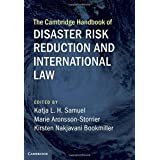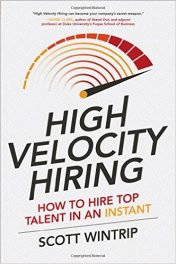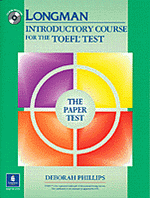 Editors: Katja L. H. Samuel, Marie Aronsson-Storrier, and Kirsten Nakjavani Bookmiller
Editors: Katja L. H. Samuel, Marie Aronsson-Storrier, and Kirsten Nakjavani Bookmiller
Publisher: Cambridge University Press – 509 pages
Book Review by: Sonu Chandiram
We face today (April 18, 2020) one of the greatest and at the same time strangest disasters in human history – entitled the Global Coronavirus Pandemic, also known as Covid-19, as named by the World Health Organization (WHO). The number 19 refers to the fact that this disaster emerged on December 1 in the year 2019. From the city of Wuhan in the province of Hubei in southern China, it has spread into almost all countries of the world.
Today, the data (found in Wikipedia) on this global disaster are sobering. This pandemic now spans 235 countries. There are 2,240,191 people who have contracted this virus, and it has already killed 153, 822 of those infected, in about five months, and is growing by the minute.
The people of the United States have had the greatest impact, with 706,880 people who have tested positive for this virus, and 32,230 deaths so far. The number of cases and deaths have been growing most rapidly in this country, relative to the rest of the world
Surprisingly, the two most populous countries on Earth – China with 1.438 billion people and India with 1.377 billion people – have the smallest number of cases and deaths on a per capita basis. I suspect this is deliberate under-reporting. The official figures from the Chinese government show 82,719 cases, with 4,632 deaths. Meanwhile, India’s Ministry of Health shows just 13,835 people infected by this virus, of which only 452 of them have been killed.
Of course, even a single life lost anywhere is a tragedy, so efforts to find a cure have been growing rapidly. Those efforts have had some success, as 568,343 of those infected by this virus have recovered. This is roughly a little over 25 percent of those who were infected. Most of the literature on the variety of cures found, presently exists in the news media, although a number of books have already been published.
In the U.S., the ultimate success of efforts to find a cure to this pandemic would be the development of a vaccine that undergoes widespread testing, and presentation of results that are approved by the Food and Drug Administration for use. Scientists involved in vaccine development have stated that it would take at least a year for one that is effective as a preventive to this virus in a large number and variety of cases.
Thirty-one specialists in disasters, from the United States and 14 other countries – Australia, Brazil, China, Denmark, Finland, Germany, Ireland, Israel, Italy, Japan, New South Wales, Sweden, Switzerland, and the United Kingdom – authored or coauthored the chapters of this boo organized around its five Parts.
This book defines disaster and presents it in its many aspects – dimensions, foundations, protection of people, reduction, risk information, risk governance, and much more, quite extensively. The contents are presented in 23 chapters. We provide you this overview below by naming its chapters below:
- Introduction
- Part I – International Law Framework and DRR
- Seven Dimensions of Disorder: The Sendai Framework and the Social Construction of Catastrophe
- Exploring the Foundations: The Principles of Protection, Mitigation, and Preparedness in International Law
- The ILC’s Articles on the Protection of Persons in the Event of Disasters nd Disaster Risk Reduction: A Legislative History
- Disaster Risk Reduction Cooperation for the Protection of Persons in the Event of Disasters
- Recognizing Limits of International Law in Disaster Risk Reduction as Problem and Solution
- Part II – Communication, Early Warning Systems, and DRR
- The ‘Protection of Knowing’ : The Evolving Concept of Early Warning and States’ Obligations to Inform of Disaster Risk and Warn of Disaster
- Speaking with One or Multiple Voices in Multi-Hazard Early Warning Systems? A Survey of International and National Legal and Policy Frameworks
- The Development of the ‘Single Voice Principle’ in National Legal Frameworks and at the EU Level
- Access to Disaster Risk Information, Early Warning and Education: Implementing the Sendai Framework through Human Rights Law
- Part III – Regional and National Approaches
- Sot Obligations and Hard Realities: Regional disaster Risk Reduction in Europe and Asia
- Embracing Regionalism: Lessons from the UN Regional Seas Programme for UNISDR and the Sendai Framework
- Disaster Risk Reduction through Risk Pooling: The Case of Hazard Risk Pooling Schemes
- Disaster Risk Governance and Coherence: The Case for Incentives for Private Business to Foster Disaster Resilience and Sustainability
- Disaster Risk Reduction and the State: The Failure of No-Build Zones after Typhoon Haiyan
- Part IV – Air, Sea and DRR
- Risk Reduction and Response Mechanisms in Aviation
- Disaster Risk Reduction in Cruise Shipping, Capacity Building for Crew Members and the Polar Code
- Regional Legal Framework for Search and Rescue: The Arctic Experience of Regulating Early Warning Systems
- Part V – Health, Cultural, Property/Natural Heritage, and DRR
- Disaster Risk Reduction, Early Warning Systems, and Global Health: Critiquing the Current System-Based Approach
- Disaster Risk Reduction, the International Federation of the Red Cross, and Emergency Health for Women in 2015
- Cultural Heritage and Disaster Risk Reduction
- The Right to Evacuation of Natural Disaster Victims and Disaster Risk Reduction in the Event of Radiation Emergencies: The Fukushima Nuclear Disaster
- Improving Disaster Risk Mitigation; Towards a ‘Multi-Hazard’ Approach to Terrorism
The Sendai Framework for Disaster Risk Reduction 2015-2030 was written and adopted by the United Nations in response to the continued growth in the number, intensity, impact, and variety of natural and ‘man-made’ disasters. This document seeks to shift the primary focus of the international community from disaster response to prevention and improved preparedness.
This book discusses the various aspects and approaches of that global initiative, providing a clear understanding of the various elements of disaster risk management. mitigation, and most important, prevention. It also emphasizes the legal obligations of countries, particularly when disasters impact some people severely, and others at much lower levels.
This is a timely, important, useful, and highly valuable book at the present time, when the Covid-19 has severely affected the health and economic well-being of millions of people globally, and solutions to problems are urgently needed.






